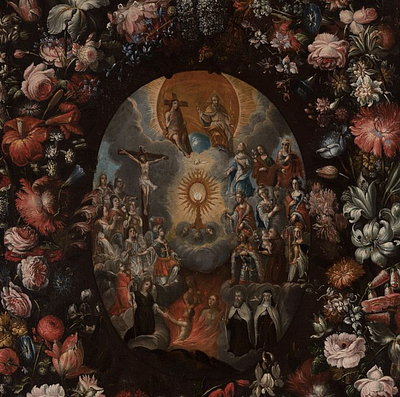School of DAVID TENIERS; second third of the 17th century. "Still life". Oil on canvas. Re-coloured. It presents repainting and restorations with a 20
Lot 118
About Seller
Setdart Auction House
Carrer Aragó 346
Barcelona
Spain
Setdart Subastas was born in 2004 and is currently the first online art auction in Spain with solidity, prestige and reliability guaranteed by our more than 60,000 users. Setdart has a young, dynamic and enterprising team ready to successfully manage the purchase and sale of art works through custom...Read more
Estimate:
EUR€4,000 - EUR€5,000
$4,166.67 - $5,208.33
Absentee vs Live bid
Two ways to bid:
- Leave a max absentee bid and the platform will bid on your behalf up to your maximum bid during the live auction.
- Bid live during the auction and your bids will be submitted real-time to the auctioneer.
Bid Increments
| Price | Bid Increment |
|---|---|
| EUR€0 | EUR€10 |
| EUR€200 | EUR€25 |
| EUR€500 | EUR€50 |
| EUR€1,000 | EUR€100 |
| EUR€3,000 | EUR€200 |
| EUR€5,000 | EUR€500 |
| EUR€10,000 | EUR€1,000 |
| EUR€20,000 | EUR€2,000 |
| EUR€50,000 | EUR€5,000 |
About Auction
By Setdart Auction House
Jul 14, 2021
Set Reminder
2021-07-14 06:30:00
2021-07-14 06:30:00
America/New_York
Bidsquare
Bidsquare : OLD MASTERS
https://www.bidsquare.com/auctions/setdart-auction-house/old-masters-7202
Setdart Auction House sofia@setdart.com
Setdart Auction House sofia@setdart.com
- Lot Description
School of DAVID TENIERS; second third of the 17th century. "Still life". Oil on canvas. Re-coloured. It presents repainting and restorations with a 20th century frame with damages. Measurements: 56 x 82 cm; 73 x 102 cm (frame). In this canvas we see a wide interior of a kitchen, organised in two planes of depth, where there are objects that form small still lifes, as well as different characters, arranged in several planes. The artist constructed a large naturalistic and scenographic painting, combining the still life with large figures to create a personal genre scene. In the 17th century the genre of the still life with figures became very important in the Dutch and Flemish schools, with compositions that were already more dynamic and theatrical, fully within the Baroque style, as we see here. The son of David Teniers I, Teniers remained faithful to his father's style in his youth. However, he soon specialised in genre painting, closely linked to the Flemish tradition. In 1638 he joined the Guild of Saint Luke, of which he later became dean. Among his patrons were the Bishop of Ghent and Archduke Leopold William. Teniers was also artistic director of the archduke's collection, a position that included not only the conservation of paintings but also the responsibility for choosing and acquiring new works for what was one of the most important collections of 17th-century painting. This gave the painter the opportunity to become acquainted with and study at first hand works by both contemporary and earlier masters of various schools and genres. In 1651 he moved to Brussels on the occasion of his appointment as court painter, a post he retained with the arrival of the new archduke, John Joseph of Austria. He was free to work for other patrons, including the greatest art connoisseurs of the 17th century: Christina of Sweden, William II of Orange and Philip IV. Supported by the latter, in 1669 he succeeded in realising his project to create the Antwerp Academy. His influence extended into the 18th century, and his works formed part of the collections of the first Spanish Bourbons. His compositions were copied in tapestries that adorned the royal palace in Madrid, giving rise to a very popular genre known as "a la Teniers". Works by Teniers can be found in the most important museums in the world, including the Prado, the Hermitage, the Louvre, the Metropolitan in New York, the National Galleries in London, Washington and Prague, the Rijksmuseum, the Royal Collection in London, the Ashmolean in Oxford, the Poldi Pezzoli in Milan, the Museum of Western Art in Tokyo, the Thyssen-Bornemisza Museum, and the Fine Arts Museums in Brussels, Vienna, Antwerp and Dresden.
- Shipping Info
-
In-house shipping available. Please inquire at admin@setdart.com.
-
- Buyer's Premium



 EUR
EUR CAD
CAD AUD
AUD GBP
GBP MXN
MXN HKD
HKD CNY
CNY MYR
MYR SEK
SEK SGD
SGD CHF
CHF THB
THB

















